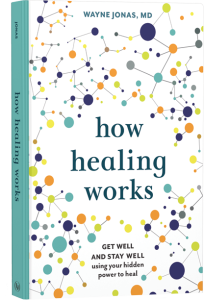When you break your leg, undergo surgery, or burn your hand, you experience pain—acute pain. With treatment and time, the pain usually disappears. But chronic pain is different. It hangs around even after the original illness or injury has improved, reminding you every day that it has no plans to vacate the premises. Technically, chronic pain is diagnosed if it persists for three to six months or more after an injury or disease heals.
Pain Defined
Pain is “An unpleasant sensory and emotional experience associated with actual or potential tissue damage, or described in terms of such damage. It is unquestionably a sensation in a part or parts of the body, but it is also always unpleasant and therefore also an emotional experience.” —International Association for the Study of Pain, 1994.
Sometimes there is a clear cause of the pain —such as arthritis—but other times there isn’t a specific trigger or underlying illness or condition. For instance, current science suggests fibromyalgia is a chronic pain condition without a specific cause that is likely related to changes in how the brain processes pain. Sometimes people may feel pain in places distant from where the original injury occurred, something called “referred” pain.
Often, chronic pain begins with an acute pain event. The pain can develop and intensify to become chronic
pain. If you have chronic pain, you’re not alone. More than 100 million American adults are estimated to have chronic pain. Chronic pain is one of the most frequent reasons for physician visits and is among the most common reasons for taking medication.
Pain is more than just a physical hurt. It is an unwanted guest that takes over your life, interfering with your ability to work, your relationships, your mental health, and your overall quality of life. It affects your entire being.
For example, those with low back pain are three times more likely to have limited functional ability and four times as likely to suffer psychological distress as those without low back pain. Unfortunately, finding the answer to your pain can feel like searching for a unicorn in a horse stable; the answer may not even live there.
Navigating the Health Care System to Find Relief
It takes a village to manage chronic pain or at least a multidisciplinary team of healthcare professionals with you (and your own self-care) at its center.
Yet one of the things the U.S. health care system as a whole systematically fails at is the provision of such coordinated care. Most care is piecemeal with little communication among providers.
So, people with chronic pain are left to jump from provider to provider, often undergoing unnecessary, costly, duplicative procedures, taking ineffective drugs, and finding their stress and anxiety increasing with every missed opportunity to relieve the pain. Often, they may feel as if they have “failed” and lose hope. In reality, it is the health care system that has failed them.
One reason is that health care providers often dismiss or minimize their patients’ reports of pain—particularly in women and racial and ethnic minorities. Indeed, there is evidence that women are more
likely to be prescribed psychological treatments for their pain than men, and are more likely to be viewed as overreacting and exaggerating their pain.
Part of the problem is that few doctors receive much training in managing acute and chronic pain. In 2010, for instance, just four of the country’s 104 medical schools required that students take a pain course. Those courses lasted between 1.5 and 13 days. Another 17 medical schools offered optional courses on pain. Most disturbing is that few of the courses dealt with the most effective treatments for pain—a multidisciplinary approach involving medical and behavioral interventions.
This leaves people with chronic pain undiagnosed, undertreated, and continually searching for a health care provider who can truly help them. Some pain sufferers give up on health care and never find adequate relief.
“While pain care has grown more sophisticated, the most effective care still is not widely available. Some cases of acute pain can be successfully treated but are not; others could be dealt with promptly, but agonizing delays occur. And most people with severe, persistent pain still do not receive – and often are not offered—systematic relief or the comprehensive, integrated, evidence-based assessment and treatment that pain care clinicians strive to provide.”—Institute of Medicine. Relieving Pain in America: A Blueprint for Transforming Prevention, Care, Education, and Research, 2011.
Chronic pain is a complicated, challenging medical condition. Managing your pain while navigating the health system can feel overwhelming. But you can lessen the strain by working with the right providers, knowing your rights, and making the most of your health care coverage.
For more information read the full report.
Drawing on 40 years of research and patient care, Dr. Wayne Jonas explains how 80 percent of healing occurs organically and how to activate the healing process.



 Take Your Health Into Your Own Hands
Take Your Health Into Your Own Hands